
| Continued from Previous Page. From Wyoming Tales and Trails This Page: Cokeville. |
 |

| Continued from Previous Page. From Wyoming Tales and Trails This Page: Cokeville. |
 |
|
|
|
About This Site |
|
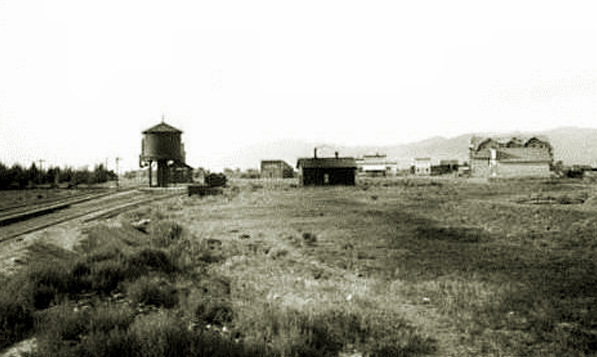 Cokeville, Wyoming, Photo by J. E. Stimson, 1903 To the Northwest of Kemmerer on Smith's Fork of the Bear River near the former site of the Oregon Trail lies Cokeville near the site of a trading post and ferry operated by Tilford Kutch. Kutch before coming to the Cokeville area had operated a ferry in the 1860's near present day Blackfoot, Idaho. Kutch was married to the daughter of Tyhee, a chief in the Bannock-Shoshoni Indians. Later Kutch and his family moved to the La Barge area where he homesteaded.
The area was original settled in 1873 by several Mormon families. It was originally named "Smith's Fork after early mountain man Jedediah S. Smith. In 1824, trapped in the area. Two years later he travelled down Smith's Fork to its confluence with the Bear River. As early as 1868 the Union Pacific did survey work in the area for a possible line to Oregon. In 1871, a bill was introduced into Congress by the Territorial Delegate, William Theophilus Jones (1842-1882) for the chartering of the Fort Bridger and Unita Mountain Railroad Company. The proposed railroad was to run from Church Butte Station to the headwaters of Smith's Fork. Proposed incorporators included William Carter of Fort Bridger, Stephen F. Nuckolls who served as Territorial Delegate from 1869 to 1871, and Gen. G. M. Dodge. The bill lanquished in Congress for several years before it apparently died a natural death. In 1878, John W. Stoner (1837-1907) arrived and established a store near where the old Oregon Trail passed thrugh the area. In 1882, the Oregon Short Line Railroad arrived connecting the Union Pacific at Granger to Oregon. J. W. moved his store to near the depot. The railroad made Cokeville a marketing center and Stoner's busness grew. He ultimately owned a saloon, store, warehouses, and a hotel. He also became an important cattleman. Stoner and John M. Sights laid out the town on property that belonged to Stoner. Thus, Stoner is regarded as the founder of Cokeville. Also settling in the area was John's younger brother, Abraham "Rocky" Stoner (1843-1910). The coming of the railroad made possible less expensive shipment of cattle and later sheep. At first, settlers in the area raised cattle but the cattle were in time displaced by the sheep until the end of World War II when cattle again came to the fore. At first Rocky Stoner settled on Sublet Creek where he engaged in trapping and hunting. Dorothy Somsen in "Bear River Valley in Cokeville Area," 45 Annals of Wyoming 262: Colorful characters make colorful history. Such a character was Mother Ryan who served meals to railroad travelers when the trains to Oregon stopped here. She lived in the section house by the railroad. One day she received a message to prepare one of her famous elk steak dinners for a group of railroad officials who were en route west. It was midsummer and elk were high in the mountains and very hard to find. She asked Rocky Stoner, a local hunter who usually supplied her game, what could be done. He told her not to worry, that was no problem. Meat wras supplied and Mother Ryan served her usual delicious dinner and the train moved on, but Rocky Stone's gray mule was never seen again.
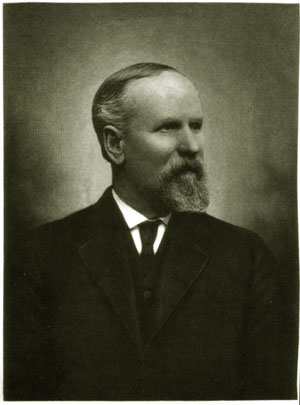 . . . . . . 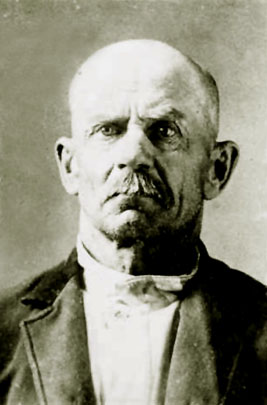 Left, J. W. Stoner. Right, Abraham "Rocky" Stoner Like other settlers, both J. W. Stoner and Abraham raised stock. Another early settler was Frank Mau (1865-1920). Present day maps of the area continue to show the "Mau Ditch" which carried water from the Bear River to Frank's property. Frank was the first mayor of the town when it was incorporated in 1910. In 1903, J. W. connected a lateral ditch to Frank's ditch. In 1903 J. W. and Frank began a feud when J. W. closed off the ditch so that he could clean it out. The result was a series of bitter lawsuits. Mau sued J. W. Stoner and received a judgment for $2,000 and an injunction. There then ensued a series of appeals to the Wyoming Supreme Court. See Mau v.Stoner 10 Wyo. 125; Stoner v. Mau 11 Wyo. 366; Mau v.Stoner 15 Wyo. 10. J. W. also had a proclivity of engaging in litigation with others including E. E. Covey & Sons in 1899 and Alma Porter in 1905. The litigation stopped only when J. W. died.
 John W. Stoner Brand, 1884
 Abraham Stoner Brand, 1884 But if J. W. Stoner had legal difficulties, Rocky's were worse. About 1886 Rocky was convicted of grand larceny of stock. In 1888, because alleged severe heart conditions, Governor Moonlight gave Rocky a pardon. Supposedly, t was expected Rocky was not expected to live out his full five year term. On March 6, 1897, the Evanston News-Register reported that he had been discharged from the State Pen having served his full term on another charge. In Septemeber he was charged with selling three horses that belonged to the Neponset Land and Cattle Company. In 1899, he was found with 250 sheep belonging to Governor Deforest Richards. Rocky claimed that the sheep were merely "strays" and he was holding them for their owner. In 1910 he was charged with misbranding. The case was struck from the court calendar because while the case was pending, he died. Whilst in the State Penitentiary, Rocky alleged became a friend of Butch Cassidy. Between stints in the Penitentiary, Rocky was alleged to have provide sanctuary for Butch and hold swag for him. See Pointer, Larry, In Search of Butch Cassidy, University of Oklahoma Press, Norman, 1988. The coming of the railroad also made coal mining practicable. The coal at the Mammoth Mine to the northwest of town was regarded as superior to that found at Almy. Additionally, the Cokeville Phosphate Co. operated phosphate mines.
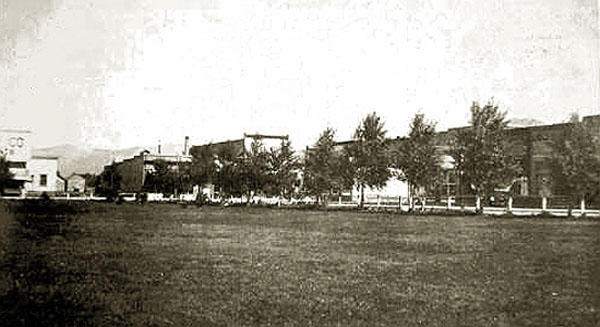 Cokeville, Wyoming, Town Square, undated. The coming of the railroad also brought a momentary bit of fame to the area in 1894 when United States Marshal Joseph P. Rankin captured a camp of "Coxeyites" who had stolen a train at Montpelier. In the early 1890's Jacob S. Coxey began a movement demanding that the federal government provide jobs for all and dissolve the Pinkerton Agency. Pinkertons were frequently used by large corporations to end labor strife. The culmination of Coxey's movement was to be a march on the capital and the Executive Mansion in Washington. Supported by, among others, the Knights of Labor, an expected 10,000 coming from all over the United States were to converge on the District of Columbia. In Montpelier, Idaho, Coxeyites, disparing of missing the festivities when the Union Pacific refused transportation, stole a train and proceeded eastward into Wyoming towards Green River on the stolen train, ignoring red signals. At Cokeville, the contingent was surprised by Rankin, arrested and transported to Green River where they were confined in empty boxcars. Some attempted escape by setting the cars alight. The fires were, however, extinquished before the Coxeyites could immolate themselves. In the end, however, Coxey arrived in Washington not with an army of 10,000, but with a mere 500 and was arrested for trespass.
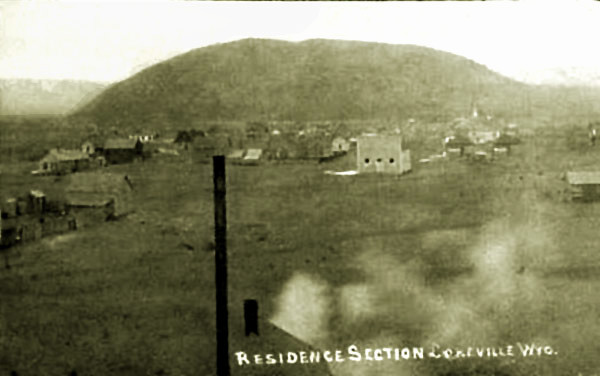 Cokeville, 1911. The 1880 census for Cokeville reflects only seven families living in Cokeville along with a hired hand and a grocer. By 1911, the town had begun to grow and had five saloons, a Mormon meeting house, the State Bank of Cokeville, The Stoner-Haggerty Hotel. the Wyman Hotel, and restuarant and a Cosgriff Store.>/p>
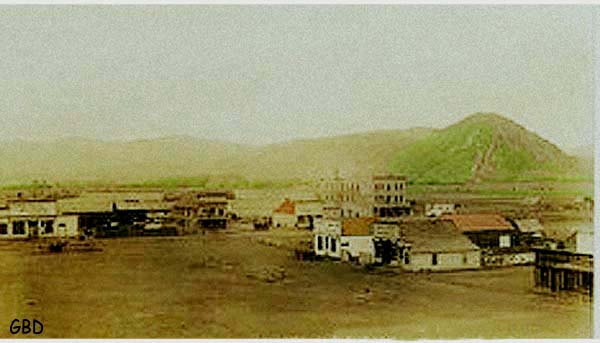 Cokeville, looking to the intersection of Main and First Street, approximately 1911. The Stoner-Haggerty Hotel is the two-story building on the corner, left of center. It burned down in 1941. The Wyman Hotel is the three story building to the right of center. The hotel was torn down in 1985 after a portion of the roof collapsed as a result of heavy snow. The one-story white building to the right of the Wyman is the State Bank of Cokeville established in 1908. It closed on Feb. 15, 1932. The big hill in the distance to the right side is apporpriately named "Big Hill." U S. Highway 30 now runs between the town and the hill. J. C. Jacobsen's blacksmith shop is the building with the reddish roof to the south of the Wyman. In 1915, an addition was constructed on the building which extended it out to First Stree. See next picture. In addition to being a blacksmith, Jacobsen would construct sheepwagons to order. Other businesses in town included an opera house and a Cosgriff store. The Cosgriff store was sold to J. C. Penney and closed in 1922.
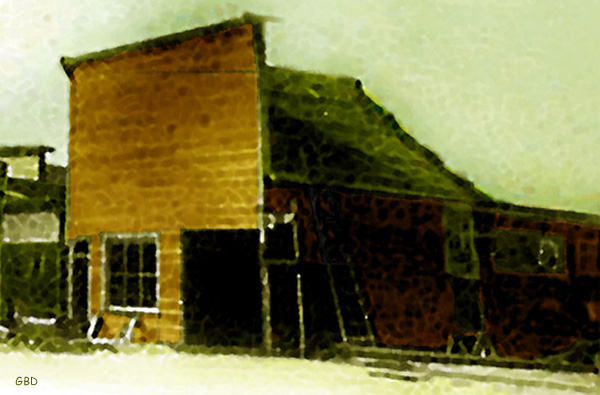 Jacobsen Garage and Blacksmith Shop, approx. 1915.. The image shows the Jacobsen Garage and Blacksmith shop after the extension was constructed. In 1916, the Garage was leased out to W. J. Russell.
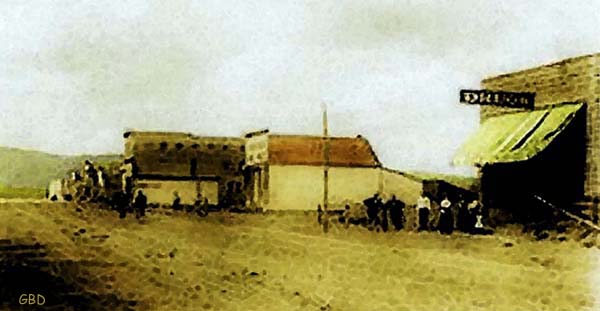 Cokeville, East Main Street looking west, approx. 1911. Next page: Construction of the Cokeville-Star Valley Road. |